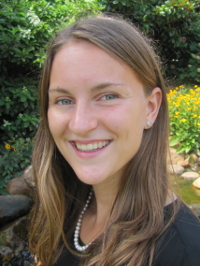2018 SRE Program Participant Profiles: Brielle Kwarta
 |
Hometown: Rochester, NY
|
Why did you apply to the SRE program?
I applied to NIMBioS because I am very interested in research involving the integration of mathematics and biology. I am passionate about biomathematics because I can use my quantitative skills to help make predictions about natural phenomena that can be useful for conservation and management in the real world. Ultimately, this SRE program matches greatly with my interests.
![]()
This program is a great experience for undergraduates to be introduced to research in a work environment that is supportive yet challenging.
![]()
– Brielle Kwarta, SRE participant
What is the purpose of your research?
Feral Cats live outdoors and have very little contact to humans. "Ferals" are considered a problem due to the cats killing wildlife, spreading infectious diseases, and causing many nuisance problems. The control of ferals has involved euthanasia practices, as well as TNR (trap-neuter-return) programs, aimed to prevent cats from reproducing. This research project involves building a mathematical model that represents the feral cat population of Knox County, TN. The economic costs associated with possible management strategies of the feral cats are coupled with this model to give guidance about policy decisions. The research could help give animal shelters insight on how to control feral cats in a cost-effective way.
Describe a typical day on the job.
On a typical day, we arrive at NIMBioS around 9 a.m. During the day we usually read scientific papers and discuss important and new findings. With new information from articles, or by the insight of our mentors, we then update our mathematical model to be more realistic. The process of updating our model usually involves many hours of discussion and working through math equations on the white boards. During the day we also update our computer code so that it matches the mathematical model that we updated earlier. Also, two to three times a week our group meets with our mentors to discuss our progress and our next steps in research.
Tell us something about your field of study we would be surprised to know.
To me, something interesting about math is how applicable it can be to other fields. My research this summer incorporates math with biology and economics.
What were your favorite parts of the SRE program?
I have really enjoyed working and getting to know the participants in the program. Everyone is extremely friendly, and we have had great times in and outside of research. My favorite event that NIMBioS has sponsored has been going to the Smoky Mountains to see the synchronous fireflies.
What new experiences did you gain that have helped you today?
Throughout this program I have learned many valuable skills including MATLAB, Excel, and being able to effectively communicate to my group members and mentors.
What advice would you give someone who's interested in/curious about participating in the program?
I highly recommend applying to this program if you are interested - there is no harm in applying! I would also recommend looking at the NIMBioS SRE website to see if any of the previous summer projects align with your interests. I would recommend this program to undergraduates that are interested in applied mathematics, biology, and computer science. This program is a great experience for undergraduates to be introduced to research in a work environment that is supportive yet challenging.
Related Links
Main SRE page
2018 Summer Program
NIMBioS
1122 Volunteer Blvd., Suite 106
University of Tennessee
Knoxville,
TN 37996-3410
PH: (865) 974-9334
FAX: (865) 974-9461
Contact NIMBioS


